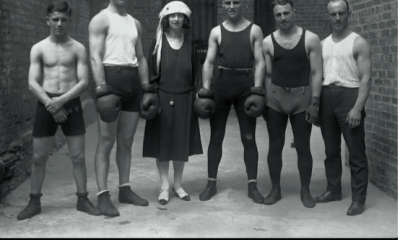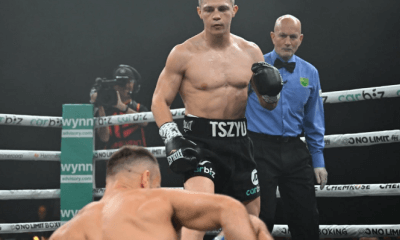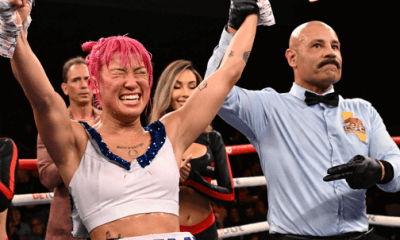Canada and USA
Frank Deford Didn’t Like Boxing, But He Wrote the Greatest Boxing Story
Frank Deford, America’s most celebrated sportswriter, died on Memorial Day, May 29, at age seventy-eight. Deford, whose best work was published by Sports Illustrated, had no peer within the sportswriting fraternity as a long-form storyteller. His profiles of sports personalities consumed thousands of words but never ran too long because they were beautifully paced and as poignant as the finest fiction.
Deford was versatile. He covered all manner of sports. But he wrote very little about boxing because he did not like it. “I despise boxing and have never altogether understood what attracts other writers to its brutality,” he wrote in a letter to his colleague John Schulian. Years later, in one of his weekly commentaries for National Public Radio’s “Morning Edition,” Deford rued that the overriding story line of the Pacquiao-Mayweather fight was money, money, money. “This particular match,” he wrote, “has become the tackiest sports event this side of hot dog eating.”
Occasionally, but not often, Deford could be snide. Regarding the waning popularity of boxing, he wrote, “Now, in the United States, boxing struggles to get good athletes because the big, desperately poor people are recruited for football, so they can get their concussions that way.”
Sports Illustrated has been around since 1954. Over the years, the magazine has employed some splendid boxing writers — William Nack, Mark Kram, Ralph Wiley, Pat Putnam, Richard Hoffer, and others – but ironically, the man who didn’t like boxing, Frank Deford, authored what is considered the best boxing story to ever appear in that august publication.
“The Boxer and the Blonde,” which ran on June 17, 1985, is centered on former light heavyweight champion Billy Conn, then in his late sixties, but focuses less on Conn’s boxing career than on his family and his ties to the city of Pittsburgh. When Deford re-visits the last few rounds of Conn’s first fight with Joe Louis – on a warm night at the Polo Grounds just before America entered the war “and the world went to hell” – one can almost feel the goosebumps as Conn brews an improbable upset that is ultimately short-circuited.
Deford appreciated good writing in others. He thought the best piece ever written under the pressure of a tight deadline was Mark Kram’s story of the “Thrilla’ in Manila.” Titled “Lawdy, Lawdy He’s Great,” it was the Oct. 13, 1975 Sports Illustrated cover story.
A Princeton man from Baltimore, Deford joined Sports Illustrated in 1962 just as Muhammad Ali was coming into prominence. But while Deford was in Ali’s company on many occasions, he never covered one of his fights. Moreover, although he liked Ali, he wasn’t mesmerized by him like so many young sportswriters. Ali, wrote Deford, was forgiven much too easily for his faults and accorded too much credit for his wit, intelligence, and character. “To read some writers,” he said, “you would have thought Ali’s doggerel made him some sort of homespun poet laureate.”
That was Deford, who found the best qualities in the people he interviewed, but never bowed down to them. Aggrandizement wasn’t in his DNA. To no surprise, the two best Ali-related pieces that he wrote were not about Ali, but about two people influential in Ali’s life: the bombastic sportscaster Howard Cosell and Ali’s closest friend, photographer Howard Bingham.
The Bingham piece was typical of Deford who wrote long, insightful pieces about high profile athletes – Bill Russell, Bobby Orr, Jimmy Connors, Arthur Ashe, etc. – but was arguably at his best when profiling an “everyman,” someone that toiled in the shadows.
In 1983, while on a plane, Deford overheard two people talking about an obscure junior college football coach in the fly-speck town of Scooba, Mississippi, a coach so tough he had two nicknames, Bob “Bull” “Cyclone” Sullivan. This serendipitous moment in the sky gave rise to one of his best S.I. stories, “The Toughest Coach There Ever Was” (April 30, 1984).
This reporter met Frank Deford once, a very brief encounter near the tennis court at Caesars Palace on the day before the Hagler-Hearns fight. Deford was standing around shooting the breeze with several people (if memory serves, Dick Schaap was there) when I approached him to tell him how much I had been moved by the Coach Sullivan story.
It was an awkward moment. Deford seemed embarrassed. “Thank you,” he stammered, and that was that. But “thank you” was sufficient. I was in the presence of a giant.
In 2012, Frank Deford was presented with the National Humanities Medal by the National Endowment for the Humanities, the first sportswriter accorded this honor. In his later years, when he wasn’t hunched over his keyboard, he worked tirelessly as the chairman and spokesperson for the Cystic Fibrosis Foundation. The disease had claimed his daughter Alexandra, who died in 1980 at the age of eight.
Frank Deford 1938-2017. R.I.P.
Check out more boxing news on video at The Boxing Channel.

The Boxer and the Blonde
-

 Featured Articles4 weeks ago
Featured Articles4 weeks agoThe Hauser Report: Zayas-Garcia, Pacquiao, Usyk, and the NYSAC
-

 Featured Articles3 weeks ago
Featured Articles3 weeks agoOscar Duarte and Regis Prograis Prevail on an Action-Packed Fight Card in Chicago
-

 Featured Articles2 weeks ago
Featured Articles2 weeks agoThe Hauser Report: Cinematic and Literary Notes
-

 Book Review2 weeks ago
Book Review2 weeks agoMark Kriegel’s New Book About Mike Tyson is a Must-Read
-

 Featured Articles4 weeks ago
Featured Articles4 weeks agoRemembering Dwight Muhammad Qawi (1953-2025) and his Triumphant Return to Prison
-
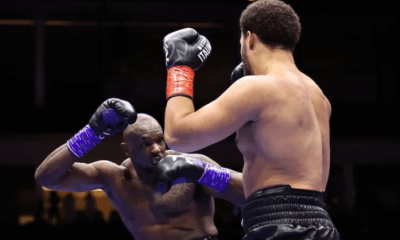
 Featured Articles6 days ago
Featured Articles6 days agoMoses Itauma Continues his Rapid Rise; Steamrolls Dillian Whyte in Riyadh
-
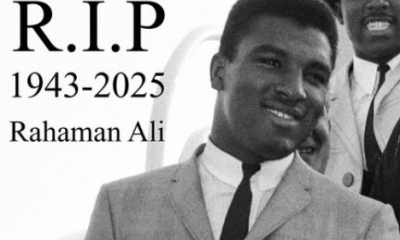
 Featured Articles3 weeks ago
Featured Articles3 weeks agoRahaman Ali (1943-2025)
-

 Featured Articles3 weeks ago
Featured Articles3 weeks agoTop Rank Boxing is in Limbo, but that Hasn’t Benched Robert Garcia’s Up-and-Comers




